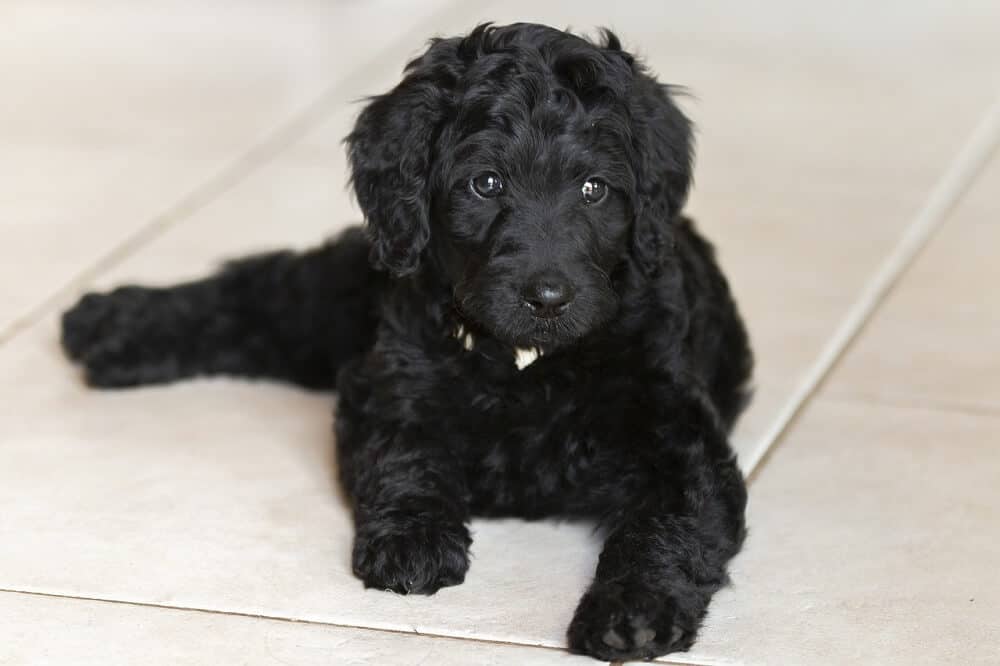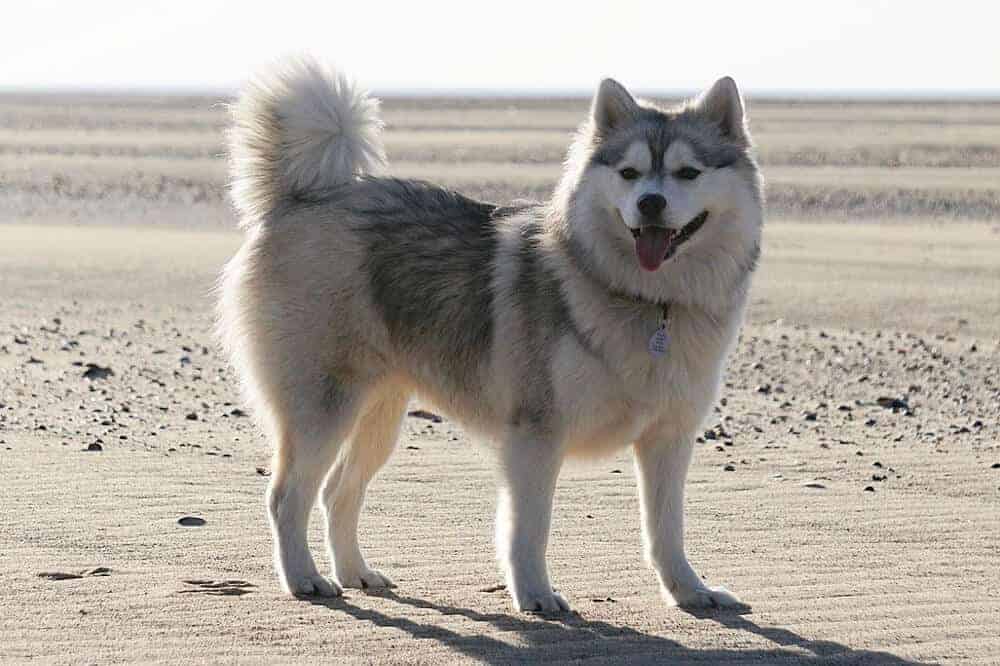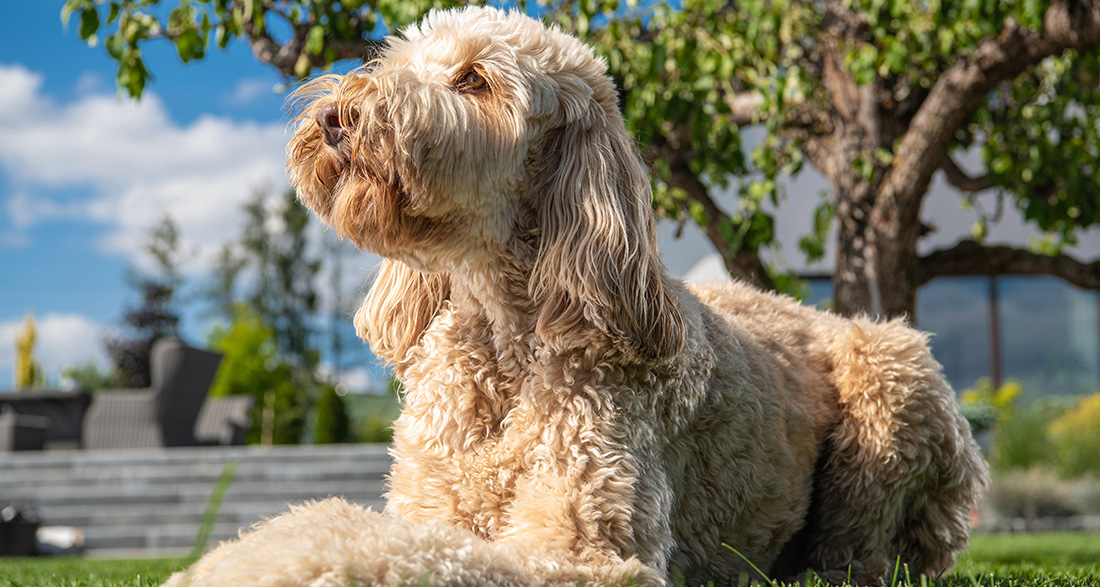What are so-called “Designer Dogs” and how many hybrid dog breeds are there? Find out everything here about new dog breeds and why theory and practice often diverge when it comes to the negative and positive traits of different dog breeds.
“Designer Dogs” or hybrid dog breeds refer to the result of the deliberate crossbreeding of at least two existing dog breeds. Naturally, almost all purebred dogs we know today are crosses and mixes of a few dog archetypes. However, these were carefully selected over many generations until the desired traits reliably appeared in the offspring. In the case of hybrid dogs, however, they are mostly first-generation crosses with purebred parents. Predictable results or promises regarding temperament, appearance, or health issues are therefore not possible.
Nevertheless, many breeders of Designer Dogs work precisely with the promise of bringing out the “best of both breeds.” A pleasantly small dog with the cute appearance of a Siberian Husky, but without its annoying need for exercise and activity? No problem – at least on paper, the Pomsky is supposed to have exactly these qualities. In practice, however, the result of pairings of incompatible breeds resembles a game of chance: On the one hand, one never knows exactly what will result when different breeds are crossed. In the worst case, thoughtless experiments can lead to new health or even behavioral problems.
On the other hand, there are few to no breed clubs and associated breed standards, breeding regulations, or controls. Therefore, the trendy designer dogs often come from unscrupulous breeders and well-meaning but inexperienced hobby breeders.

Origin of Hybrid Dog Breeds
The idea for hybrid dog breeds originally came from Australian dog breeder Wally Conron, who worked with an organization training guide dogs for the blind. As a result, he wanted to create an assistance dog that was also well-tolerated by people with a dog hair allergy. That’s why in 1989, he decided to cross the often used guide dog Labrador Retriever with the non-shedding Poodle to create an allergy-friendly therapy dog. However, he could never achieve this goal – which did not deter other dog breeders from dazzling customers with wild promises.
Conron deeply regrets the trend that ensued, thoughtlessly pairing dog breeds together. Because due to the enticing marketing, many hopeful dog parents are willing to pay thousands of dollars for a mixed breed that is unpredictable in health, appearance, and temperament. And the greed for profit, in turn, attracted breeders and backyard breeders in masses. “I opened Pandora’s Box and unleashed Frankenstein’s monster into the world,” the breeder remorsefully says. “I think the vast majority of Labradoodles are either crazy or have a hereditary disease.” He has “no idea” why the hybrid continues to be bred today. For him, the project was a clear failure – but with too good advertising.

Overview – Which Hybrid Dog Breeds Are There?
First off: Breed umbrella organizations like the FCI and many dog breeding associations generally do not recognize these hybrid dog breeds. Also, breeding practices do not always meet the high standard that should be maintained in dog breeding. Most breed names are therefore unofficial, and there is de facto no complete breed list. Here are only the most well-known hybrid dog breeds listed.
Crossbreeds with Poodle:
Most hybrid dogs with the suffix “-oodle” trace back to a Poodle parent (from the English “Poodle”). Smaller dog breeds are usually crossed with miniature or toy Poodles.
- Bernedoodle = Bernese Mountain Dog x Poodle
- Cockapoo = Cocker Spaniel x Poodle
- Goldendoodle = Golden Retriever x Poodle
- Havapoo = Havanese x Poodle
- Labradoodle = Labrador Retriever x Poodle
- Schnoodle = Schnauzer x Poodle
- Yorkipoo = Yorkshire Terrier x Poodle

Crossbreeds with Beagle:
- Beaglier = Cavalier King Charles Spaniel x Beagle
- Bogle = Boxer x Beagle
- Jack-A-Bee = Jack Russell Terrier x Beagle
- Labbe = Labrador Retriever x Beagle
- Puggle = Pug x Beagle
Crossbreeds with Pomeranian:
The designation of the hybrid dog breed usually includes part of the English term for the Pomeranian, “Pomeranian.”
- Ewokian = Havanese x Pomeranian (The name comes from the small creatures of the Ewoks from the Star Wars universe!)
- Jack-A-Ranian = Jack Russell Terrier x Pomeranian
- Pomsky = Husky x Pomeranian

Crossbreeds with Chihuahua:
- Chiweenie = Dachshund x Chihuahua (from Eng. “wiener dog” for Dachshund)
- Chug = Pug x Chihuahua
Crossbreeds with Siberian Husky:
- Gerberian Shepsky = German Shepherd x Husky
- Horgi = Welsh Corgi Pembroke x Husky
- Pitsky = American Pitbull Terrier x Husky

Crossbreeds with Corgi:
These dog breeds arise from crosses of Welsh Corgi Pembroke and less commonly Welsh Corgi Cardigan.
- Auggie = Australian Shepherd x Corgi
- Border Corgi = Border Collie x Corgi
- Cocker Spangi = Cocker Spaniel x Corgi
- Corgidor = Labrador Retriever x Corgi
- Dorgi = Dachshund x Corgi
Does a Hybrid Dog Suit Me?
This question cannot realistically be answered – not even by the breeders themselves. Crossing two dog breeds is akin to genetic roulette and does not provide a reliable way to predict the appearance, temperament, or health of the offspring. As a potential customer, one should be aware of this risk, and reasonably reputable dog breeders adjust their customers’ expectations to reality. Nevertheless, too many “Designer Dog” breeding facilities deliberately promise to provide the perfect dog for everyone.
Hybrid dog breeds that are supposed to be suitable for allergy sufferers are particularly popular. However, a guaranteed “hypoallergenic” dog is a myth. Allergies are rarely actually triggered by the fur, but by the so-called Can f1 protein in the dog’s body – which is primarily found in saliva, dander, and urine. Therefore, even hairless dog breeds can trigger allergic reactions in humans.
So, if it must be a Labradoodle or a Cockapoo, prospective dog owners should be aware that they will receive a very unpredictable puppy. Whether this fits the family’s lifestyle and how much effort training and exercise will require can only be determined in adulthood. Therefore, when raising hybrid dogs, it is advisable to always seek guidance from dog professionals such as a trusted veterinarian and trainer.


